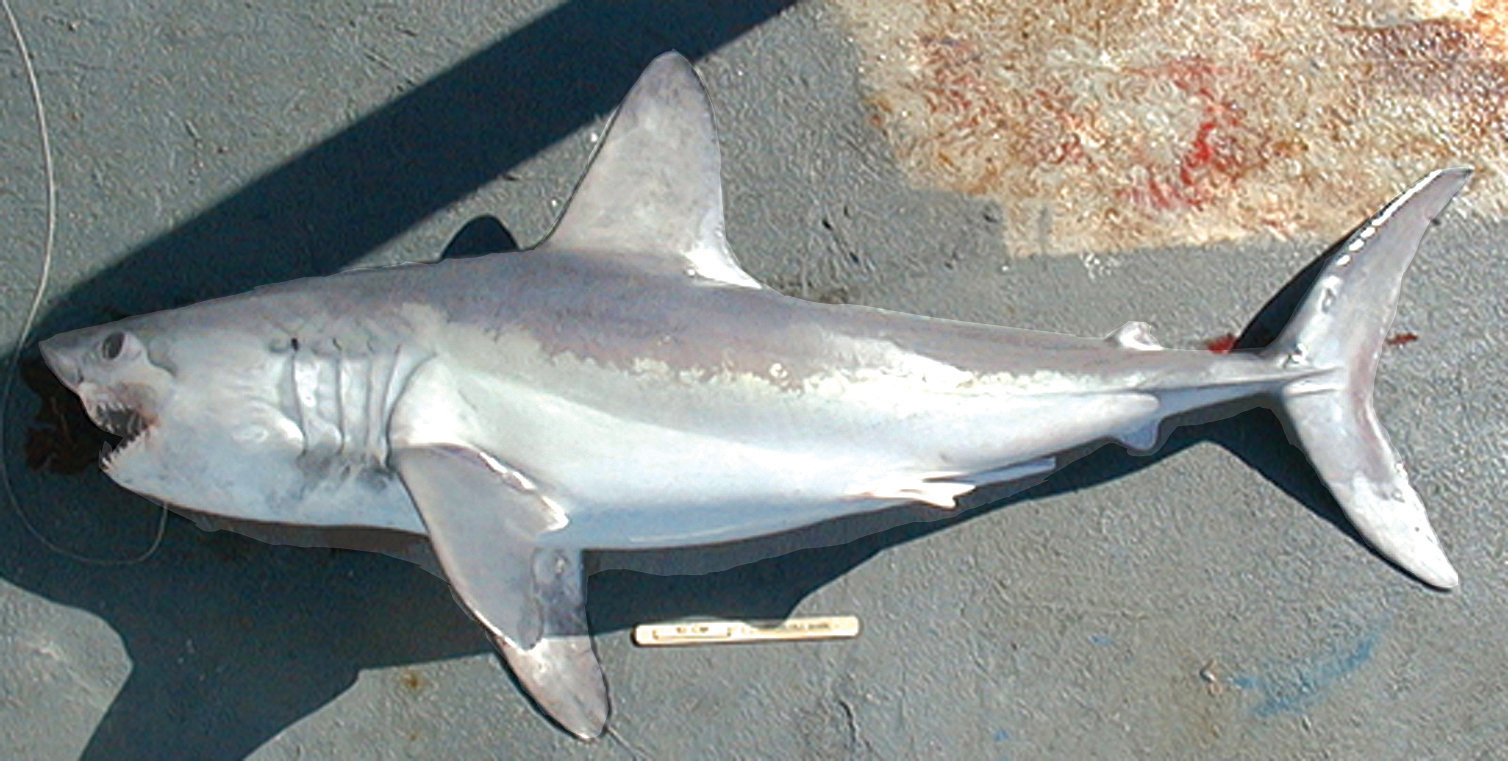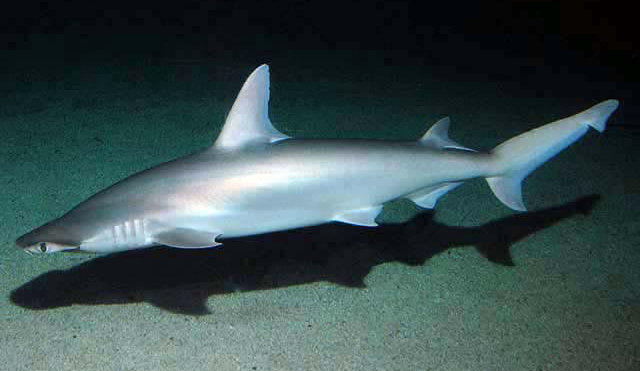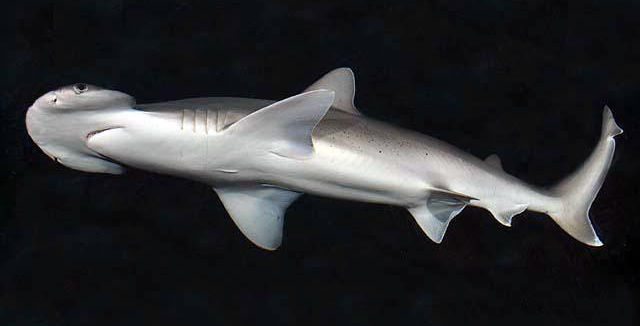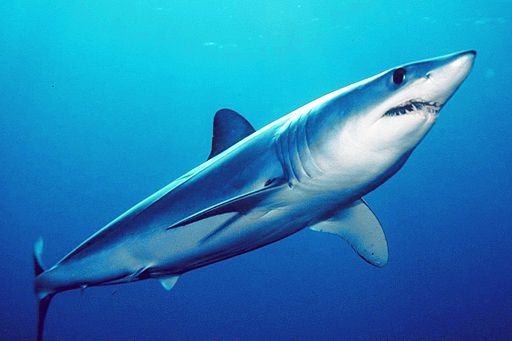Shark
Species Description
Shortfin mako Isurus oxyrinchus
Porbeagle Lamna nasus
Thresher Alopias vulpinus
Smooth dogfish Mustelus canis canis
Spiny dogfish Squalus acanthias
Blue shark Prionace glauca
Bonnethead Sphyrna tiburo
Smooth hammerhead Sphyrna zygaena
Wild.
Some 23 species of shark inhabit the Gulf of Maine for all or part of the year. Of these, only a handful are harvested commercially and recreationally for seafood.
Some sharks caught as bycatch in other fisheries may be exported for oil, sent to fish meal processing plants, or sold for meat in the US and abroad.



Season
Summer, when many sharks from warm, southern waters stray into the Gulf of Maine.
Status
Shortfin mako are overfished; overfishing is occurring.
Porbeagles are overfished; overfishing is not occurring.
The Atlantic common thresher shark has never been assessed and the overfished status and overfishing status are unknown.
Smooth dogfish are not overfished; overfishing is not occurring.
Spiny dogfish are not overfished; overfishing is not occurring.
Blue sharks are not overfished; overfishing is not occurring.
The status of Bonnethead sharks is unknown.
It’s unknown if Smooth hammerheads have been overfished; overfishing is occurring.
(more from Atlantic States Marine Fisheries Commission)
Regulatory Authority
Atlantic States Marine Fisheries Commission and the Atlantic Highly Migratory Species Division.
Harvest Method
Hook and line, also caught as bycatch in trawl and gillnet fisheries. See the vessel and gear guide for more information.
Recreational Harvest
For the latest information on current retention limits, visit NOAA Fisheries.
Sportfishing is allowed from a vessel with a required Federal Highly Migratory Species (HMS) angling permit. For permits and current fishing regulations visit the National Marine Fisheries Service Permit Shop or call 1-888-872-8862.
It is prohibited to take coastal sharks in Maine’s territorial waters.
Health Benefits & Risks
Shark is a good source of vitamin B12, selenium and omega-3 fatty acids.
Sharks are large, long-lived species at the top of the food chain, and thus contain elevated levels of mercury. There is a consumption advisory for shark due to contamination from mercury, PCBs, dioxin, and other chemicals. The State of Maine recommends that pregnant and nursing women, women who may get pregnant, nursing mothers and children under eight years old not eat any shark. Everyone else should limit the consumption of shark to twice a month.
View the 2021 US Food and Drug Administration’s fish consumption guidelines.
Buying & Preparing
Shark steaks are sometimes available in Maine seafood markets and restaurants, but labels may not indicate the species or origin. Unless the fish is sourced directly from Maine fishermen, it can be difficult to determine whether it was landed locally or what species you’re getting.
In Maine, the most commonly landed shark species are porbeagle, blue shark, and occasionally thresher, all caught offshore. The porbeagle is considered the most desirable for eating due to its mild flavor and firm, steak-like texture.
Shark meat is dense and lean, best cooked like a steak—grilled, broiled, or pan-seared. Because shark can contain urea, which may develop an off-putting ammonia odor if not properly handled, it’s best to cook it fresh. Some cooks prefer to marinate shark steaks in lemon juice, vinegar, or milk to help neutralize any lingering flavors.
Recipes
Certifications & Verifications
Links
- NOAA Fisheries Species Directory

